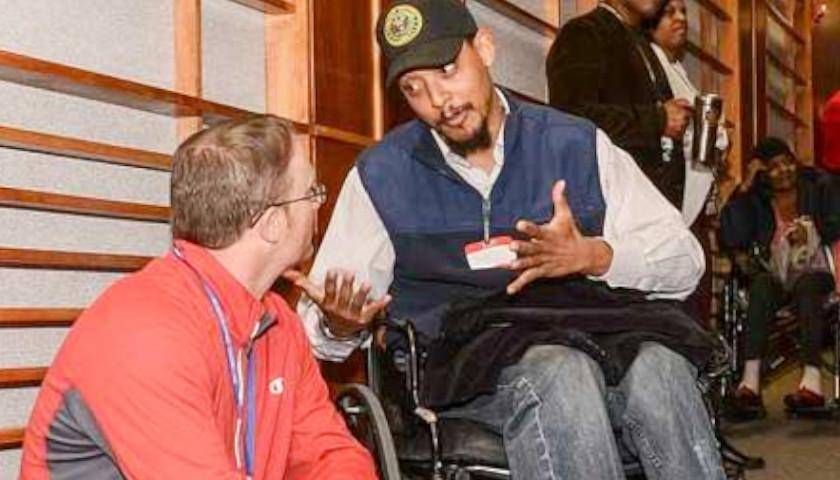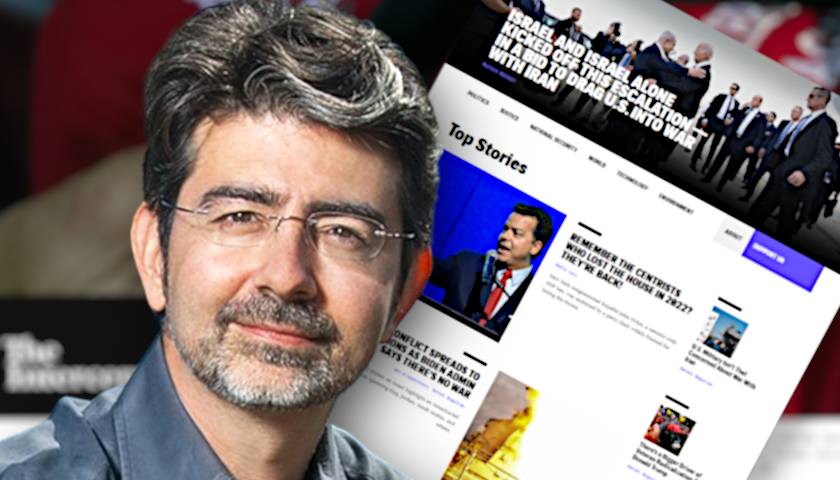Kari Lake filed a reply brief in her election case appeal with the Arizona Court of Appeals on Tuesday. It accused Maricopa County of rigging the 2022 election and said the county admitted wrongdoing in its answering brief. Her appeal is asking to overturn the lower court’s ruling rejecting her Rule 60(b) motion, which asked to consider new evidence that had arisen since the trial. A Rule 60(b) motion asks the court for relief from an entry or judgment, which the trial court refused to grant after her trial.
Drafted by attorney Bryan Blehm and also signed by Lake’s attorney Kurt Olsen, the summary in the introduction stated, “In its Answering Brief, Maricopa makes demonstrably false or misleading arguments to distract the Court from the evidence and admissions showing that Maricopa blatantly violated Arizona election laws, falsely certified it conducted L&A testing on October 11, 2022, and apparently rigged the November 2022 Election to fail on Election Day.”
The brief cited the applicable legal standard laid out in Miller v. Pichaco Elementary School District No. 33. “These shortcomings — failing to L&A test all vote-center tabulators on October 11 and altering all vote-center tabulators on October 14, 17, and 18 — are material because failing to undergo statutorily mandated L&A testing makes those tabulators unreliable to use in elections, requiring the election to be set aside.”
The reply brief said the county admitted in its answering brief seven months after it had engaged in activity that should have been conducted during the Logic & Accuracy testing period. That statutorily mandated period took place on October 11, 2022, as laid out in A.R.S. 16-449, but the county admitted that beginning three days later, it “spent three days: (1) cutting the seals on the 446 vote-center tabulators; (2) taking out all of the memory cards containing the election program; and (3) reformatting and reinstalling those 446 memory cards, purportedly with a copy of the previously certified election program.”
Next, the brief said the county admitted that it “(1) conducted unannounced testing on those 446 vote-center tabulators; (2) had 260 of the 446 tabulators reject ballots with the ‘same type of Ballot Misread errors that also occurred on Election Day’; and (3) then resealed the 446 vote-center tabulators for use on Election Day.”
This later testing violated the law since “Arizona law required new L&A testing — and new notice — for the vote-center tabulators with reformatted memory cards and new software.”
Due to the later testing, the county “[h]ad advance notice that vote-center tabulators would reject ballots on Election Day on an unimaginable scale at nearly two-thirds of Maricopa’s 223 vote centers.”
However, the county described the ballot misread errors as “mundane” and “not necessarily indicat[ing] the tabulator is malfunctioning,” the brief said.
The brief pointed out that the county had no response to the chaos caused by the tabulators rejecting ballots. “Maricopa’s brief is silent on the fact that Maricopa’s system log (‘SLOG’) files show that Maricopa’s vote-center tabulators rejected defective BOD-printed ballots more than 200,000 times at a rate of over 7,000 every 30 minutes from 6:30 am, shortly after the polls opened, through 8:00 pm, after the polls closed, causing massive lines and chaos on Election Day,” it said.
The brief said the county argued that Rule 60(b) motions don’t apply to election cases, citing an election case where the judge denied it was applicable. However, that was because the motion wasn’t made timely in that case, Moreno v. Jones.
Most of the county’s arguments consisted of a variation of contending that granting a Rule 60(b) motion would bring up new issues into the appeal, which is forbidden by law. However, cases are often won on appeal due to new evidence appearing — evidence is not the same thing as new claims. The brief asserted, “Maricopa does not defend the outcome-altering nature of Lake’s Rule 60(b) evidence.” Lake and her attorneys discovered the Logic & Accuracy testing problem after the first trial was over. “The SLOG files predate the judgment,” so the evidence existed prior to the trial, it was just unknown at that time.
The brief cited the McGregor Report, which looked at “pre-judgment facts leading up to Election Day.” That report, which was solicited by the county, found significant problems involving the ballot-on-demand printers on Election Day in the county. While the county claimed the printer problems were “just some ‘random’ unexplainable event,” Maricopa County Elections co-director Scott Jarrett claimed they were a “hiccup,” the McGregor Report contradicted that. McGregor concluded, “We could not determine whether this change resulted from a technician attempting to correct the printing issues, the most probable source of change, or a problem internal to the printers.”
McGregor acknowledged that the printing problems occurred on both brands of printers used on Election Day. Lake’s expert witness, Clay Parikh, testified that “[i]t is impossible to have the same randomly occurring issue on two different types, models and manufacturers of printers” without “malware or remote administration changes,” which the brief noted included hacking. The county tried to dispute Parikh’s findings but did not dispute his expertise.
Jarrett lied during his testimony, the brief asserted. Jarrett said the tabulation problems affected “three vote centers and 1,300 times,” but the problems occurred at “127 out of Maricopa’s 223 vote centers at least 8,000 times … which also means at least 6,700 ballots were not duplicated or counted.”
The brief noted that it’s not required to prove election fraud. “Maricopa does not dispute that ‘[m]isconduct within [Rule 60(b)(3)] need not amount to fraud or misrepresentation but may include even accidental omissions.’ … Maricopa thus concedes Rule 60(b)(3)’s application to accidental omissions (i.e., the rule does not require proving fraud).”
The county insisted that Lake said there was no signature verification conducted during the 2022 general election. This was inaccurate, the brief stated. “The record clearly shows Lake has never said no signature comparisons occurred,” she merely said it did not occur for “a material number of early ballots.”
Lake and her attorneys argued that the trial court misinterpreted the pivotal case in this area, Reyes v. Cuming. “[A]ccording to Maricopa, Reyes permits anything less than 100% noncompliance with signature-comparison requirements before authorizing a remedy — an irrational rule that would produce absurd results.” Instead, they said, “While Reyes involved no signature comparison whatsoever, that fact was incidental.” The standard held by Reyes was whether a non-technical statute was broken. “Reyes held this statutory purpose — ‘to prevent the inclusion of invalid votes’ — made § 16-550(A) a ‘non-technical statute’ that required actual compliance, not substantial compliance.”
Reyes held that the standard for overturning an election was whether the violation “rendered the outcome of the election uncertain.” The brief said, “Reyes voided all the absentee ballots for the practical reason that the failure to compare signatures affected all the ballots, not because disregard of § 16-550(A) was universal versus partial. … Properly understood, Reyes requires setting an election aside for material non-compliance with § 16-550(A).”
Another issue the brief brought up was the county’s failure to “compare” signatures for verification. Evidence was produced during the second trial revealing that signature reviewers approved signatures within one, two, three, or a few more seconds, “faster than it was physically possible for humans to perform Maricopa’s own processes.”
Since A.R.S. 16-550(A) states that signature comparisons must be conducted to the “the satisfaction of the recorder, or his designee,” and the recorder’s own instructions give very detailed instructions on how this must be conducted, this statute was violated. Those instructions “require between six and eleven specific characteristics of two different signatures to be evaluated for consistency. Performing this evaluation takes time — not much time in some cases, but enough for a judicial determination whether the act of comparison could possibly have occurred in the time spent.”
Consequently, the brief disputed that “275,000+ early ballot affidavit signatures approved in under 3 seconds were all ‘compared’ consistently with the requirements of A.R.S. § 16-550(A).”
The brief concluded by asking for a new election.
– – –
Rachel Alexander is a reporter at The Arizona Sun Times and The Star News Network. Follow Rachel on Twitter / X. Email tips to [email protected].
Photo “Kari Lake” by Gage Skidmore. CC BY-SA 2.0.






[…] Story continues […]